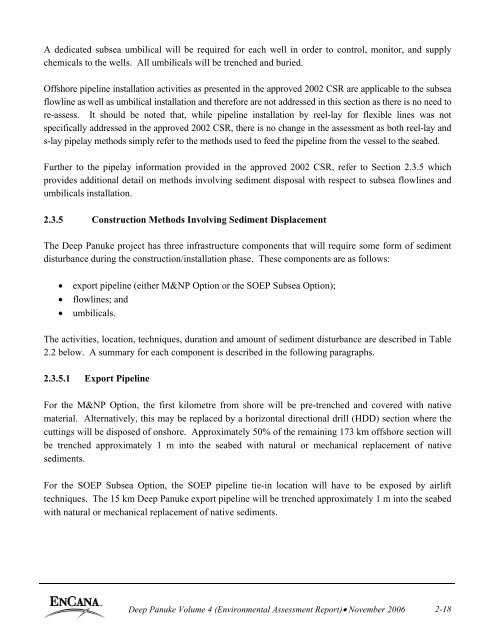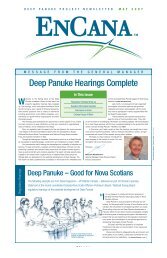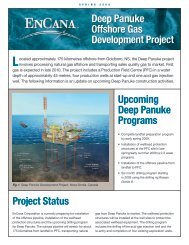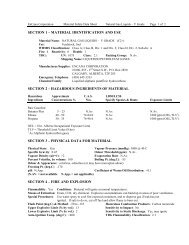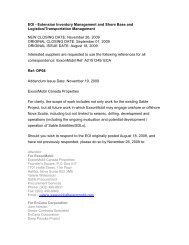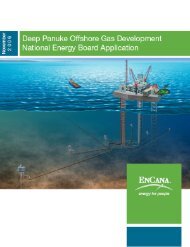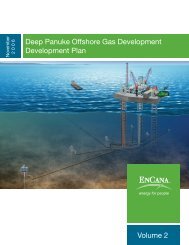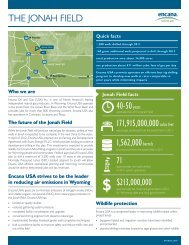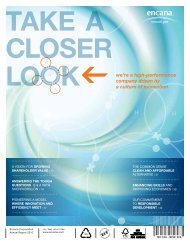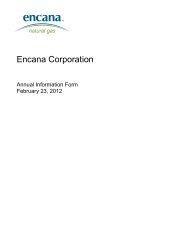Deep Panuke Project Description - Encana
Deep Panuke Project Description - Encana
Deep Panuke Project Description - Encana
Create successful ePaper yourself
Turn your PDF publications into a flip-book with our unique Google optimized e-Paper software.
A dedicated subsea umbilical will be required for each well in order to control, monitor, and supplychemicals to the wells. All umbilicals will be trenched and buried.Offshore pipeline installation activities as presented in the approved 2002 CSR are applicable to the subseaflowline as well as umbilical installation and therefore are not addressed in this section as there is no need tore-assess. It should be noted that, while pipeline installation by reel-lay for flexible lines was notspecifically addressed in the approved 2002 CSR, there is no change in the assessment as both reel-lay ands-lay pipelay methods simply refer to the methods used to feed the pipeline from the vessel to the seabed.Further to the pipelay information provided in the approved 2002 CSR, refer to Section 2.3.5 whichprovides additional detail on methods involving sediment disposal with respect to subsea flowlines andumbilicals installation.2.3.5 Construction Methods Involving Sediment DisplacementThe <strong>Deep</strong> <strong>Panuke</strong> project has three infrastructure components that will require some form of sedimentdisturbance during the construction/installation phase. These components are as follows:• export pipeline (either M&NP Option or the SOEP Subsea Option);• flowlines; and• umbilicals.The activities, location, techniques, duration and amount of sediment disturbance are described in Table2.2 below. A summary for each component is described in the following paragraphs.2.3.5.1 Export PipelineFor the M&NP Option, the first kilometre from shore will be pre-trenched and covered with nativematerial. Alternatively, this may be replaced by a horizontal directional drill (HDD) section where thecuttings will be disposed of onshore. Approximately 50% of the remaining 173 km offshore section willbe trenched approximately 1 m into the seabed with natural or mechanical replacement of nativesediments.For the SOEP Subsea Option, the SOEP pipeline tie-in location will have to be exposed by airlifttechniques. The 15 km <strong>Deep</strong> <strong>Panuke</strong> export pipeline will be trenched approximately 1 m into the seabedwith natural or mechanical replacement of native sediments.<strong>Deep</strong> <strong>Panuke</strong> Volume 4 (Environmental Assessment Report)• November 2006 2-18


